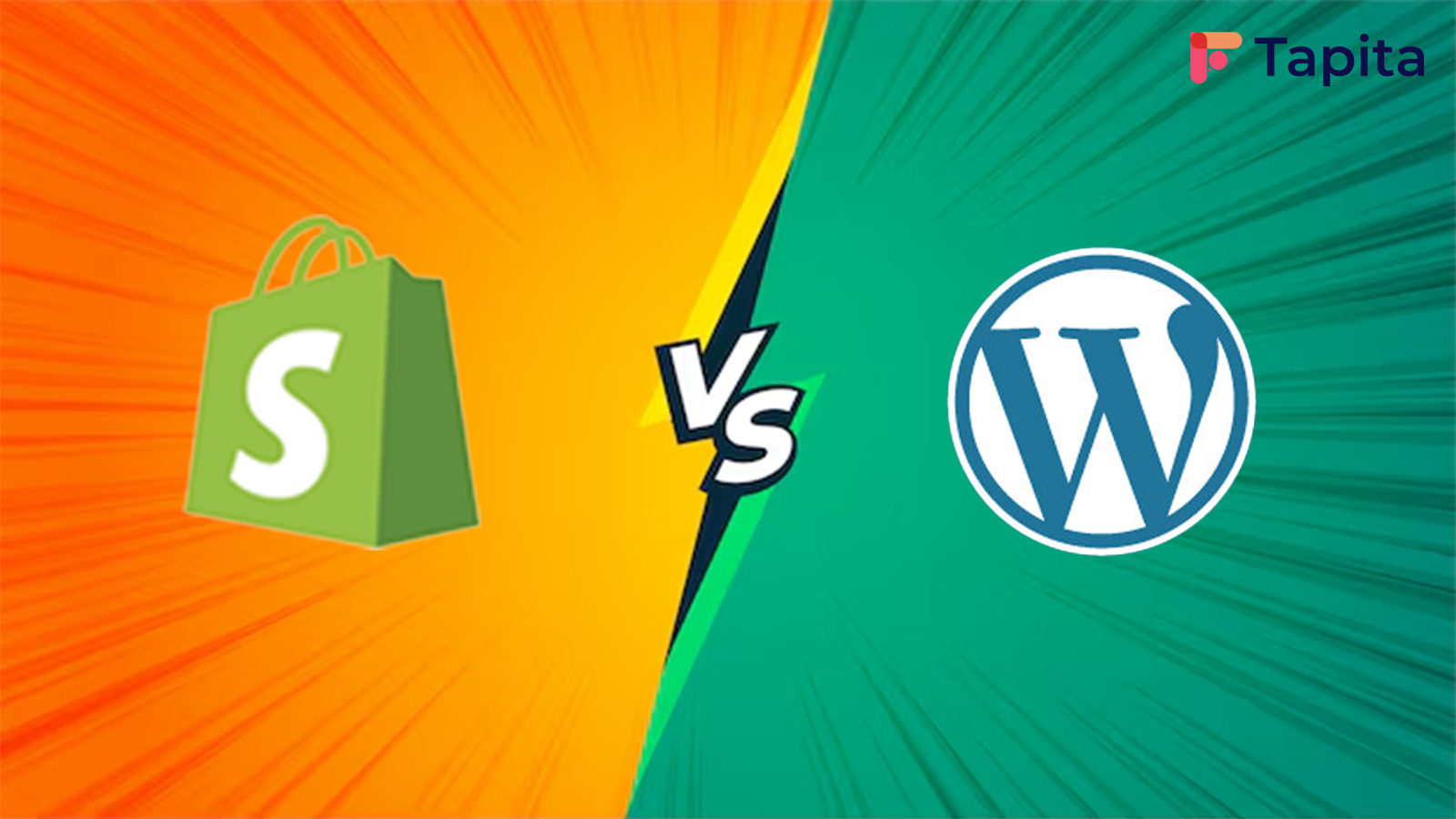Are you looking to build an online store or a website for your business? If so, website builders have become an essential tool for businesses and individuals alike, allowing you to create professional-looking websites without the need for coding skills. Squarespace and Shopify are two prominent players in the website builder market, each with its own unique features and capabilities.
Squarespace is a website builder that offers a wide range of features, including customizable templates, e-commerce functionality, blogging tools, and more. It’s known for its sleek design options and user-friendly interface, making it a popular choice for creative professionals, artists, and small businesses.
Shopify, on the other hand, is primarily an e-commerce platform that allows businesses to set up and manage online stores. It offers a comprehensive set of tools for building and managing an online store, including payment processing, inventory management, and order tracking.
In this article, we’ll do a detailed comparison of Squarespace and Shopify to help you decide which platform is suitable for you.
Squarespace vs Shopify comparison
1. Pricing and Plans
| Category | Squarespace | Shopify |
| Pricing and Plans | Squarespace offers four pricing plans: Personal ($16/month), Business ($13/month), Basic Commerce ($27/month), and Advanced Commerce ($49/month). | Shopify offers three pricing plans: Basic Shopify ($25/month), Shopify ($65/month), and Advanced Shopify ($399/month). |
| Transaction Fees | Squarespace does not charge transaction fees on any of its plans. | Shopify charges transaction fees ranging from 0.5% to 2% depending on the plan. These fees can be waived or reduced by using Shopify Payments as the payment gateway. |
| Payment Gateways | Squarespace offers integrations with several popular payment gateways, including Stripe, PayPal, and Apple Pay. | Shopify has its own payment gateway called Shopify Payments, which also supports third-party gateways like Stripe, PayPal, and Amazon Pay. |
| Additional Costs | Squarespace charges extra for features like e-commerce functionality and advanced analytics, which are included in higher-tier plans. Custom domains and email accounts also come with additional costs. | Shopify charges extra for features like gift cards, professional reports, and third-party shipping rates, which are included in higher-tier plans. Custom domains and email accounts also come with additional costs. |

2. Design and Templates
The design and templates of your e-commerce website play a crucial role in attracting and retaining customers. Both Squarespace and Shopify give us multiple design options and templates to create visually appealing and professional-looking websites. Squarespace is known for its sleek and modern templates, with a focus on visual aesthetics and simplicity. The platform offers over 100 templates, categorized into different industries such as art, fashion, food, and more. These templates are fully customizable, allowing you to create a unique website design that aligns with your brand.
On the other hand, Shopify offers over 100 customizable templates that are designed specifically for e-commerce websites. These templates are categorized into different styles, including minimal, playful, and trendy, making it easy to find a design that suits your brand identity. Additionally, Shopify provides a drag-and-drop website builder, allowing you to easily customize the design elements without any coding skills.
Squarespace and Shopify offer responsive designs, ensuring that your website looks great on all devices, including desktops, tablets, and mobile phones. However, Squarespace may have an edge in terms of design flexibility and creativity, while Shopify provides a more focused approach for e-commerce websites.
3. E-commerce Features
| Category | Squarespace | Shopify |
| E-commerce Features | Squarespace offers basic e-commerce functionality, allowing users to set up an online store, manage products, process payments, and track orders. It also provides features like inventory management, discounts, and abandoned cart recovery. However, Squarespace’s e-commerce features may be limited compared to other dedicated e-commerce platforms. | Shopify is a dedicated e-commerce platform, providing robust and advanced e-commerce features. It offers features like unlimited product listings, inventory management, order management, multiple payment gateways, shipping options, and abandoned cart recovery. Shopify also has a vast library of apps and integrations that enhance its e-commerce capabilities. |
| Payment Gateway Options | Squarespace offers a variety of payment gateways, including Stripe, PayPal, and Apple Pay. However, it may not have as many options compared to Shopify. | Shopify offers a wide range of payment gateways, including over 100 options, such as Stripe, PayPal, Shopify Payments, Amazon Pay, and more. This gives users more flexibility in choosing a payment gateway that suits their business needs. |
| Abandoned Cart Recovery | Users can set up automated email reminders to recover abandoned carts and encourage customers to complete their purchase. | Users can set up automated email reminders, and even SMS notifications, to recover abandoned carts and increase conversion rates. |
| Inventory Management | Squarespace provides basic inventory management features, allowing users to track and manage product inventory. However, it may not be as advanced compared to Shopify, which offers more robust inventory management capabilities, including product variants, stock tracking, and fulfillment integration. | Shopify offers advanced inventory management features, allowing users to track and manage product inventory, set stock levels, and manage product variants. Shopify also integrates with third-party fulfillment services, making order management and fulfillment more streamlined. |
4. SEO and Blogging
Having a website that is search engine optimized (SEO) and allows for blogging is essential for driving organic traffic and engaging with customers. Squarespace and Shopify both offer SEO and blogging features, but they may differ in terms of capabilities and ease of use.
Squarespace provides built-in SEO tools, allowing you to optimize your website content, meta tags, URLs, and image alt tags. It also automatically generates a sitemap and allows you to add custom descriptions and keywords for each page. Squarespace’s blogging capabilities also allow you to create and publish blog posts, schedule them, and customize their appearance.
About Shopify, it offers basic SEO features such as custom meta tags and URLs, but it may not be as comprehensive as Squarespace in terms of SEO capabilities. However, Shopify makes up for it with its extensive blogging capabilities. It offers a built-in blogging platform that allows you to create and manage blog posts, categorize them, and even schedule them for future publishing. Additionally, Shopify has a large app store with SEO plugins that can further enhance your website’s SEO performance.
5. Website Performance and Loading Speed
Squarespace owns reliable hosting and automatically optimizes images for faster loading. It also provides a built-in caching and content delivery network (CDN) to ensure that your website loads quickly across different regions. Squarespace’s websites are known for their fast loading speed, which contributes to a seamless user experience.
On the contrary, Shopify offers hosting through its own servers, ensuring that your website loads quickly and performs well. It also provides image optimization features and content delivery through its global CDN, contributing to faster loading times. Additionally, Shopify has a large app store with caching plugins that can further enhance your website’s performance.
Squarespace vs Shopify: deciding factors
When choosing between Squarespace and Shopify for building an online store, there are several factors to consider. Let’s take a closer look at which features each platform excels in.
1. Features which Squarespace wins
- Design and Templates: Squarespace offers a wide range of modern and visually appealing templates that cater to different industries. With over 100 options, Squarespace provides more flexibility in terms of design customization.
- Pricing and Plans: Squarespace offers competitive pricing plans, including a lower-priced Personal plan for small businesses on a budget. This makes it a suitable option for those looking for a more affordable option.
- Blogging Capabilities: Squarespace provides built-in blogging capabilities, making it a suitable choice for content-focused websites or businesses that require a robust blogging platform along with their online store.
2. Features which Shopify wins.
- E-commerce Features: Shopify is known for its comprehensive e-commerce features, including advanced inventory management, discount codes, and abandoned cart recovery. It offers a wide range of tools to help businesses manage their online store more efficiently.
- SEO Features: While both Squarespace and Shopify offer basic SEO features, Shopify provides more advanced SEO capabilities, such as the ability to edit meta tags, URLs, and image alt tags, making it a better option for businesses that prioritize SEO optimization.
- App Store: Shopify has a large and diverse app store, offering numerous third-party apps to enhance the functionality of an online store. This makes it a more flexible option for businesses that require specific features beyond the built-in offerings.
In conclusion, Squarespace and Shopify both have their strengths in different areas. Squarespace is a good choice for businesses that prioritize design customization and affordable pricing, while Shopify is more suitable for businesses that require advanced e-commerce features, SEO capabilities, and access to a large app store. It’s important to carefully consider your specific needs and priorities when making a decision between the two platforms.
Summary
In conclusion, when comparing Squarespace and Shopify, it’s essential to consider several key factors. Pricing and plans play a crucial role in determining the affordability and scalability of the platform for your business. Design and templates impact the visual appeal and customization options of your website. E-commerce features are important for online businesses, including payment gateways, product management, and inventory management. SEO and blogging capabilities can impact your website’s visibility and content marketing efforts. Website performance and loading speed affect user experience and search engine rankings.
It’s important to carefully evaluate your business needs and goals when choosing between Squarespace and Shopify. Consider your budget, website design preferences, e-commerce requirements, SEO and blogging needs, and website performance expectations. Each platform has its strengths and weaknesses in these areas, so take the time to research and compare before making a decision. Additionally, consider factors like ease of use, customer support, and available integrations to ensure the platform aligns with your business objectives.
Ultimately, the right choice between Squarespace and Shopify will depend on your specific business needs and goals. Take the time to thoroughly evaluate both platforms and choose the one that best fits your requirements and budget to set your business up for success online.




